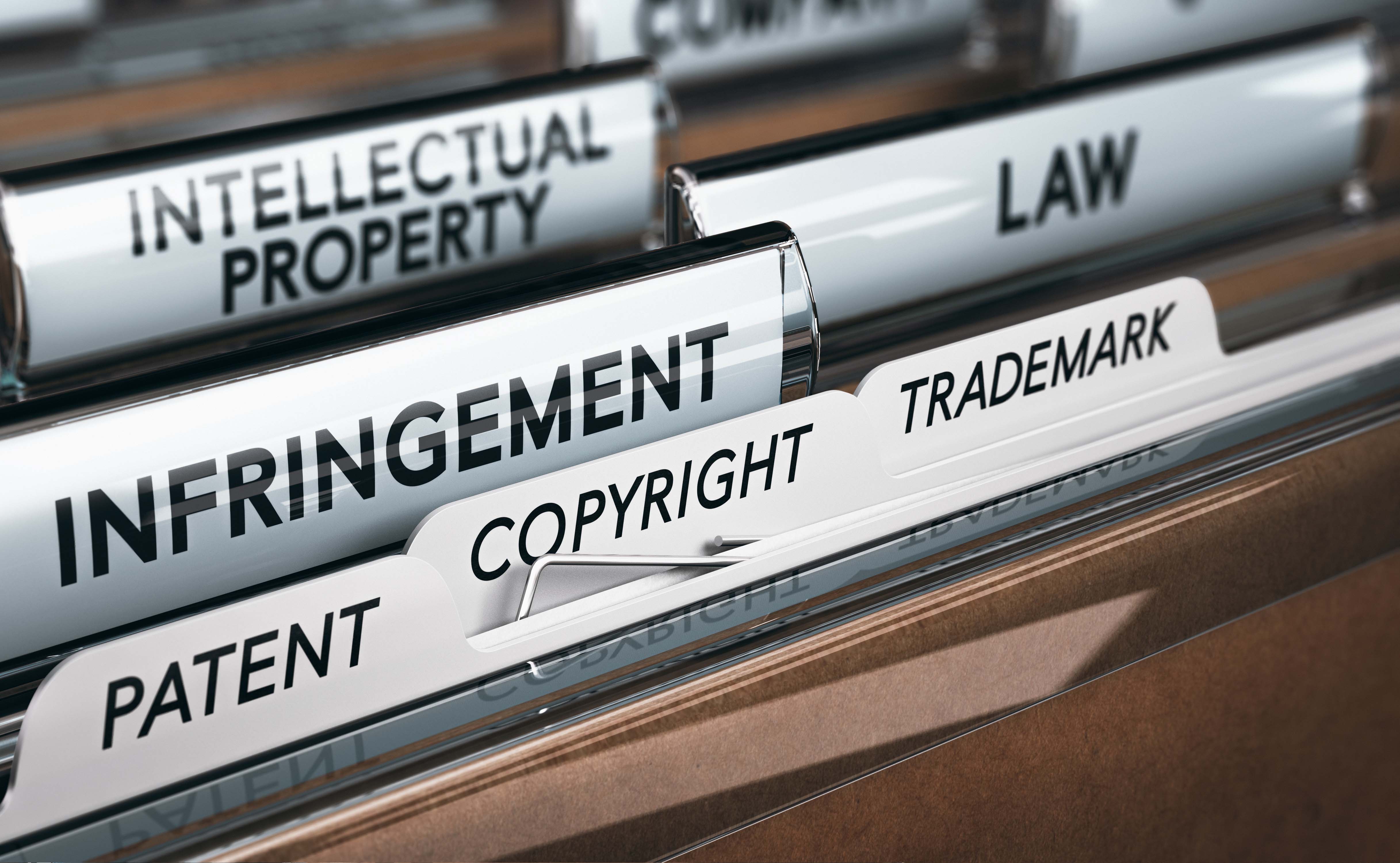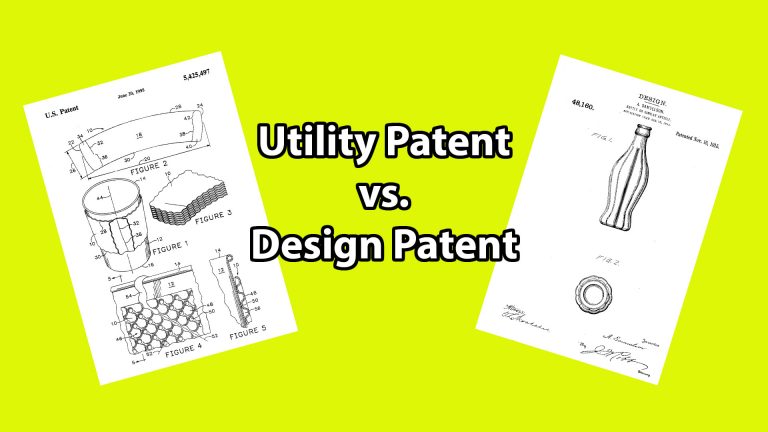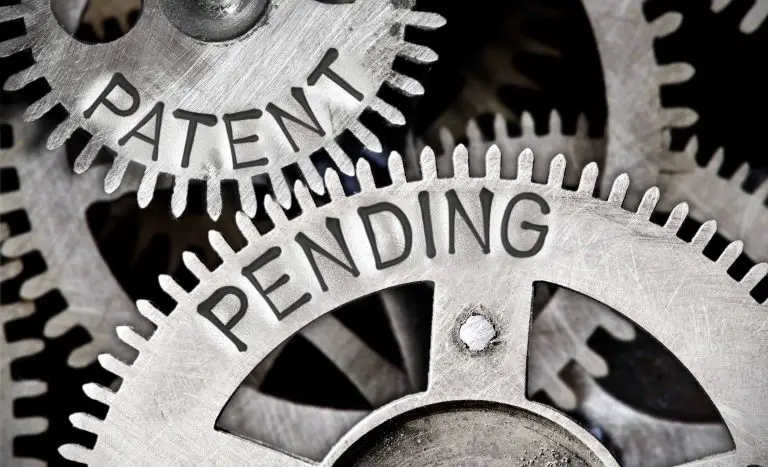The Differences Between Patents and Trademarks
Patents and Trademarks are two types of intellectual property (IP). They both help protect people who have created intellectual property from having their intellectual property used by others without permission.
But while patents and trademarks have some things in common, they’re actually quite different. Here is the main difference between patents and trademarks.
Patents specifically protect technical inventions that have a use. Trademarks protect words, phrases, and symbols, or any combination of those things, that is used to distinguish someone’s goods or services from someone else’s. In short, patents protect products you invent, and trademarks protect your brand.
But there’s a little more to it than that. The process for getting a patent is different form the process for getting a trademark, and the protection they actually give you is pretty different.
Patent vs Trademark
Patents vs Trademarks, how are there different? A trademark protects a symbol, name, word(s), logo, or design that represent the brand or source of the good, whereas a patent protects an inventor’s invention or product itself.
For example, lets take an American football. Here, the name “National Football League” (NFL) functions as a trademark. So does the NFL’s logo. But the football itself is something that could be patented for it’s special shape (at least when it was originally invented).

So simply put, trademarks protect brand names, logos, and designs used to refer to the seller or manufacturers of a good. The purpose is to prevent others in the same industry from using the same brand name, logo, or other design or one that is very similar.
Patents give property rights to an inventor of a product, preventing others from using and selling the product. Companies often used both forms of intellectual property to protect their rights, just remember patents and trademarks are very different from one another.
Typically, patents and trademarks do not overlap, but they can in some limited cases. For example, an inventor can use a design patent to protect how an invention looks and if the appearance of the invention is used by customers to identify the source of the product, an inventor can protect the product with both a trademark and a patent.
Trademark Protection
A trademark consists of a word or group of words or a symbol that indicates a source of products or services. Trademarks are typically composed of a name, label, logo, slogan, colors, or combination of these to refer to a source of goods or services.
Trademarking your company’s logo or catchphrase is important because trademarks make it easier for people to immediately seek out and choose your brand, creating brand loyalty. Without trademark protection, someone could copy your exact logo or create a similar one and apply it to their own merchandise, leading to a loss of brand loyalty and leaving you without much means of recourse.
However, you do get some trademark protection, even if you don’t file for a trademark, just by commercially using a name, logo, design, etc. You just don’t get nearly as much protection. More on that later.
When you apply for and receive trademark protection, you can prohibit others from using, producing, or profiting from it. Also, if someone tries to copy your mark or produce a similar one, you have legal rights to sue for damages and to prevent them from using it.
Here are some well-known trademark name examples:
- Nike
- Bloomingdale
- Coca Cola
- McDonald’s Golden Arches
- Tiffany Blue Color
- Apple
- Pepsi
Trademarks do not offer any protection on the products that you manufacture. So, if a you have competitors, they can legally produce the same goods or services that you make unless you file for a patent and the USPTO (United States Patent and Trademark Office) grants your patent application.
That said, the requirements to get your word(s) or logo trademarked are far less strict than those to qualify for a patent.
Patent Protection
Patents protect inventions by restricting others from making, selling, or using a product that’s similar to the one you’ve patented for as long as the patent is in effect. Once the patent term ends, your invention is no longer protected and falls into the public domain.
There are three types of patents that you can apply for:
- Utility Patents. Utility Patent protect inventions, processes, machines, pharmaceuticals, and electronics. Utility patents last for 20 years from the date you filed your patent application
- Design Patents. Design Patents protect the ornamental appearance of a product. For example, if you create new and unique jewelry you can patent the look by filing for a design patent. This patents lasts for 14 years from the date the design patent is granted
- Plant Patent. This type of patent protects new, asexually produced plants. Plant patents last for 20 years from the date your filed your patent application
Here are some examples of patents:

Trademarks vs Patents Chart
The following table lists the differences between trademarks and patents:
| Comparison | Patent | Trademark |
|---|---|---|
| Meaning | A government issues this right to patent holders which allows them to exclude others from making, using, or selling their invention | Trademarks are a symbol, words, or words that represent the source of a product or service |
| Protection Offered | Protects inventions, processes, or designs | Protects a brand’s goodwill and/or reputation associated with the trademark |
| Prevents | Prevent others from producing, using, or selling the patented product | Prevents others from using the same or confusing similar word, logo, or symbol to a company’s registered trademark |
| Registration | Must Register for Protection | Discretionary Registration but registration offers superior protection |
| Application | Inventions, designs, plants | Marks or symbols on good representing the brand offering the goods for sale |
| Term | 20 years from first filing of patent application | As long as the mark is used as a trademark (If you register, must renew registration every 10 years) |
You may have noticed that registration for trademarks is discretionary. This means that you do get some trademark protection, even you don’t formally register your trademark. The protection is significantly limited when you don’t file, but just the fact that you use a name, logo, design, or slogan in your business (and there were not prior businesses in your industry and geography using them) you have some trademark protection.
Patent vs Trademark Protection Term
Another difference between patents and trademarks is how long each lasts. A trademark term lasts for 10 years, but if you continue to use the trademark, you can renew it for an additional ten years. As long as you keep using it as a trademark, you can continue to renew it in 10 year increments.
Trademark registration is not mandatory, you can establish common law rights in a mark based on your use of a trademark, however registration does give you some pretty good advantages.
Federal registration of your trademark has several advantages that include:
- Nationwide notice of your ownership of the trademark
- Exclusive right to use your trademark on goods or services
- Legal presumption of ownership of your trademark
On the other hand, a patent is a limited duration property right relating to an invention. Utility patents last for 20 years from the patent application filing date and design patents last for 14 years from the date the patent application is granted.
Generally, you cannot renew a patent once the term expires. Once a patent expires, it goes into the public domain and anyone can use, sell, or profit from the patented invention.
Why is Knowing the Difference Between Patent vs Trademark Important?
Knowing the difference between the two is important because you need to know for which protection to apply for. Applying for a patent when you need a trademark or vice versa is the easiest waste to lose money and waste your time. Filing an application for either a trademark or a patent is a long process that requires some familiarity with the law. That said, patent applications require much more time, effort, and expertise to complete.
Deadline to File for Trademark vs Patent
We will now discuss the deadlines for filing trademark and patent application. Read to find out if it’s too late to file your application.
Trademark Filing Deadlines
If you want to register your trademark you don’t have a deadline, you can file at any time but you won’t be federally protected until you successfully register your trademark. That said, the filing date of your trademark becomes important if another person or company tries registering a trademark that’s the same or identical to yours, your filing date helps the USPTO decide who has priority over the claimed mark.
Patent Filing Deadlines
As far as patents go, you are required to file an application with the USPTO within 1 year of disclosing your invention to the public. So, what’s considered disclosing your invention to the public? Public disclosure includes any non-confidential communication an inventor makes to one or more members of the public, revealing the existence of the invention. That said, if you don’t submit a patent application within 12 months of publicly disclosing your invention, you will lose the opportunity to patent your idea.
Currently, there is a loophole in the patent system that allows you to file an application even if you publicly disclosed your invention. Let’s explore it.
The standard patent application is a non-provisional patent application and it has a term of 20 years. However, if you didn’t file your application within 12 months of disclosing, you can bypass this requirement by filing a provisional patent application. Filing a provisional patent application gives you an extra 12 months to work on the non-provisional patent application.
Having said that, the USPTO does not grant non-provision patent application, so you will still have to file a non-provisional patent application within 12 months of filing your provisional application.
So, you might be asking yourself, what’s a provisional patent application? A provisional patent application (PPA) is a patent application that can be used by an inventor to secure a filing date while avoiding the costs associated with filing and prosecuting a non-provisional (standard) patent application.
Because a PPA essentially provides a 1 year extension to file your non-provisional patent application, PPA provides you with an extra year to:
- Experiment with your invention
- Perfect your invention
- Find financial backers
- Determine sales potential
- Finding parties who want to license your invention
Now let’s move on to what a provisional patent application does not provide, it does not provide you with a provisional patent on your invention. Once you submit your non-provisional patent application, you will be able to use the words “patent pending” on your product and advertising materials. Once the USPTO approves your patent application, you can replace “patent pending” with “patented” or your patent number.
Difference Between What Happens when you Apply for a Patent vs Trademark
Trademark
Protecting your trademark by registering it with the USPTO is one of the best things that you can do for your business or brand. Trademarks offer legal protection against anyone who uses your exact mark or a mark that’s similar to yours. Without federal registration, you run the risk of someone else using your trademark, confusing your customers and at worst damaging your reputation.
Registering your trademark comes with a cost, trademark applicants spend between $250 and $600 to register their trademarks. The process of registration takes between six months and sixteen months. While your trademark application is pending, you can use the “TM” to signify your trademark and once your trademark application is approved and your mark registered, you can begin to use the (R) registered symbol instead, signifying federal registration of your mark.
Patent
If you opt to not patent your invention, you run the risk of someone stealing your idea or invention and passing it off as their own. If you have an invention that is new and useful, you should apply for a patent if you want to profit from it because without a patent, you don’t have any protection.
Without protection anyone can copy your invention or product, sell it, and profit from it. Without having a patent under your belt, you leave your product or invention open to copycats, losing out on opportunities to license or sell your invention to companies.
Having said that, filing for and successful prosecuting a patent is a long and expensive process. The current fee to file a patent application ranges from $75 to $300 depending on the size of your business (yes, the larger your business, the more you pay in fees). The fees don’t end there; here is a list of fees you may have to pay throughout the patenting process:
- Application filing fee: $75 to $300
- Utility patent search fee: $165 to $660
- Patent examination fee: $190 to $760
- Utility patent issue fee: $250 to $1,000
- Extensions of time $50 to $3,000
- Patent maintenance fee: $400 to $1,600
- 3.5 year maintenance fee: $400 to $1,600
- 7.5 year maintenance fee: $900 to $3,600
- 11.5 year maintenance fee: $1850 to $7,400
What this list shows you is that the cost of obtaining a patent can easily cost several thousand dollars when you calculate all of the fees associated with filing for and maintaining your patent.
Frequently Asked Patent & Trademark Questions
- Do I need a trademark or patent? If you are trying to protect an invention, idea, or design you should apply for a patent. On the other hand, if you want to protect your company’s mark or symbol, you should apply for a trademark.
- How long does it take to get a trademark approved? If you applied for a trademark with the USPTO, you are looking at a wait time between 6 months and 16 months.
- How long does it take to get a patent approved? All three types of patents take between 1 year to 3 years, depending on the complexity of your invention.
Steps to File Trademark or Patent Application
Trademark Filing Steps
- Review the trademark database to make sure no one has already registered your mark or something similar to it
- Fill out the trademark application with the USPTO
- Track the status of your trademark on USPTO.gov
- If you’re approved, add the registered logo to your trademark
Patent Filing Steps
- Search the patent database to make sure no one has patented anything like your idea
- Choose & fill out the correct patent application (utility, design, plant)
- File your application with the USPTO
- Track the statute of your application on the USPTO website
Difference Between Trademark and Patent
If you’re thinking about trademarking or patenting your intellectual property, we hope that this article helped you choose the correct intellectual property to protect. If you need any help with trademark vs patent, you can leave your question or comment in the section below. Thanks for reading, patent on!








